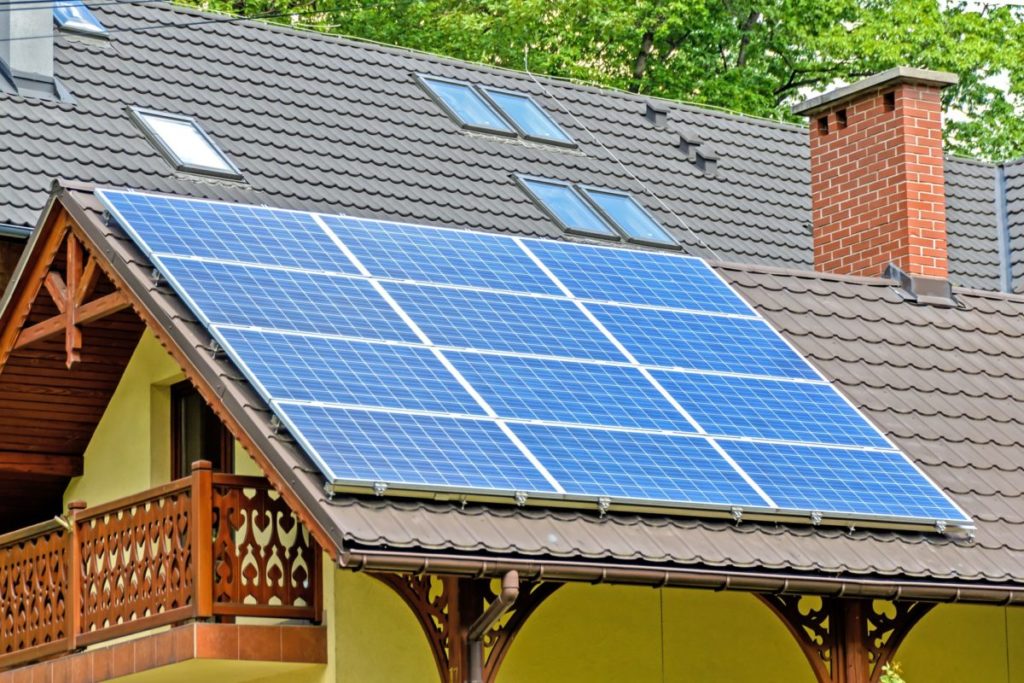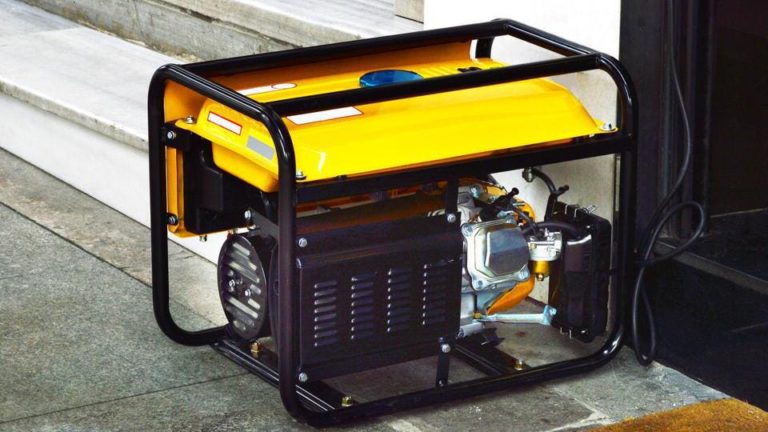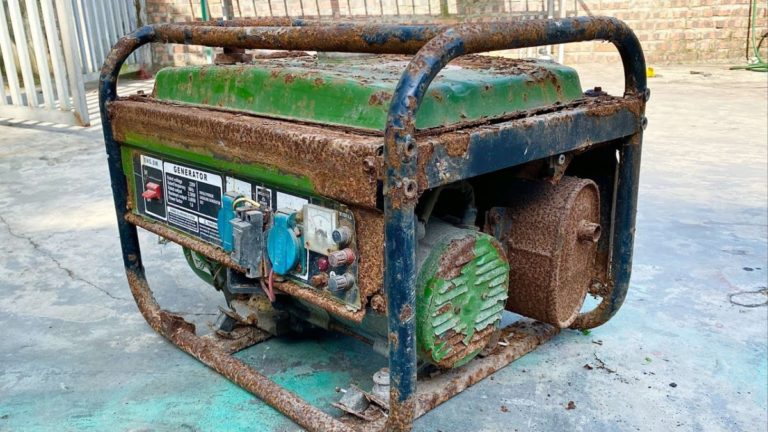As more individuals and families look to harness the power of solar energy, scaling and sizing your off-grid solar system can be a important aspect to consider.
We will delve into the intricacies of designing an efficient and cost-effective renewable energy system that meets your unique needs and provides a reliable source of electricity for years to come.
Whether you’re aiming to power a small cabin or a large homestead, our expert guidance will help you determine the right combination of solar panels, battery banks, and inverters for your specific situation.
By carefully sizing and scaling your off-grid solar system, you can enjoy a self-sufficient and sustainable source of energy that reduces your reliance on the grid and minimizes your carbon footprint.
Let’s embark on this informative journey together!
Assess Your Energy Needs
Determine how much energy you need to power your home or business. Consider factors such as the size of your space, the number of occupants, and your energy usage habits.
Start by assessing the size of your space, including the square footage and the number of rooms.
This will give you an idea of how much energy is required to power the lights, appliances, and heating and cooling systems.
Next, consider the number of occupants in your home or business, as this will affect the amount of energy needed to power the lighting, heating, and cooling systems.
Analyze your energy usage habits to identify areas where you can make changes to reduce your energy consumption.
For example, if you have a lot of energy-intensive appliances, such as a large refrigerator or a hot tub, you may need to consider alternative energy sources or replace these appliances with more energy-efficient models.
By taking these factors into consideration, you can accurately determine how much energy you need to power your home or business and make informed decisions about your energy needs.
Determine Your Solar Potential
Assess the amount of sunlight your location receives, which will affect the size of your solar array. Use online tools or consult with a professional to determine your solar potential.
Determining the optimal size of your solar array begins with assessing the amount of sunlight your location receives.
This is a important factor in ensuring that your solar panels are able to generate enough electricity to meet your energy needs.
Online tools and professional consultations can help you evaluate your solar potential.
One such tool is the Google Project Sunroof, which provides detailed information on the solar potential of your location based on factors such as weather data, roof size, and orientation.
Alternatively, you can consult with a professional solar installer who can perform a solar site assessment to determine the appropriate size of your solar array.
They will consider factors such as tree cover, shading, and local weather patterns to ensure that your solar panels are optimized for maximum energy production.
By understanding your solar potential, you can choose the right size of solar array to meet your energy needs and take advantage of the many benefits of renewable solar energy.
Choose a Suitable Solar Panel System
Select a solar panel system that is appropriate for your energy needs and budget. Consider factors such as the type of panels, their wattage, and their efficiency.
Choosing the right solar panel system for your energy needs and budget requires careful consideration of several factors.
You should determine the type of panels that best suit your needs, such as monocrystalline or polycrystalline panels.
Monocrystalline panels are more efficient but also more expensive, while polycrystalline panels are less efficient but more affordable.
Next, you should consider the wattage of the panels, as this will directly impact the amount of energy they can produce.
Generally, a higher wattage system will be more expensive, but it will also provide more power for your home or business.
You should consider the efficiency of the panels, as this will determine how much energy they can produce from the same amount of sunlight.
High-efficiency panels are more expensive, but they can provide more power and save you more money in the long run.
By carefully weighing these factors, you can select a solar panel system that meets your energy needs and fits within your budget.
Size Your Battery Bank
Choose a battery bank that can store enough energy to meet your needs. Consider factors such as the type of batteries, their capacity, and their lifespan.
When selecting a battery bank for your energy needs, it’s essential to choose one that can store enough energy to meet your requirements.
This involves considering various factors, such as the type of batteries, their capacity, and their lifespan.
The type of batteries is a important aspect to consider.
Lead-acid batteries are the most common choice for stationary energy storage, but lithium-ion batteries are becoming increasingly popular due to their higher energy density and longer lifespan.
The type of batteries you choose will depend on your specific energy needs and budget.
The capacity of the batteries is a critical factor to consider.
The capacity refers to the amount of energy the batteries can store.
For instance, if you need to power a large load for an extended period, you’ll require a high-capacity battery bank.
The capacity of the batteries will directly affect the amount of energy you can store and use as needed.
The lifespan of the batteries is a important consideration.
Lead-acid batteries typically last between 5-7 years, while lithium-ion batteries can last up to 15 years or more.
The lifespan of the batteries will determine how frequently you’ll need to replace them, which can be costly.
Therefore, it’s essential to choose batteries with a long lifespan to minimize replacement costs and ensure a stable energy supply.
Choosing a battery bank that can store enough energy to meet your needs is a critical decision.
Consider the type of batteries, their capacity, and their lifespan before making a selection.
By carefully evaluating these factors, you can ensure a reliable energy supply that meets your specific needs and budget.
Select an Inverter
An inverter converts the DC power from your solar panels to AC power for use in your home or business. Choose an inverter that is appropriate for your energy needs and system size.
An inverter is a important component in any solar panel system, as it converts the DC power generated by the panels into usable AC power for your home or business.
To ensure optimal performance and energy efficiency, it’s essential to choose an inverter that matches your energy needs and system size.
First, determine your energy requirements by considering factors such as your daily power consumption, the size of your space, and the number of appliances you need to power.
This will help you choose an inverter with the right power output.
For example, if you have a small home with minimal power requirements, a 2-kilowatt inverter may suffice, while a larger business or home with more energy-intensive appliances may need a higher power output, such as a 5-kilowatt inverter.
Next, consider the size of your solar panel system.
The inverter should be able to handle the maximum power output of your panels, which is typically measured in watts.
For example, if your panels can produce 300 watts of power each, you’ll need an inverter with a minimum output of 300 watts.
Choosing an inverter that is appropriately sized for your solar panel system will ensure that you can maximize your energy production and reduce the risk of system malfunctions.
Be sure to choose an inverter that is compatible with your specific solar panel technology.
String inverters are the most common type of inverter and are designed to work with crystalline silicon panels.
However, if you have a thin-film solar panel system, you may need a specialized inverter, such as a thin-film inverter.
By considering your energy needs and system size, and choosing an inverter that is compatible with your solar panel technology, you can ensure that your solar panel system operates at peak efficiency and produces the maximum amount of energy possible.]]]>
When it comes to selecting an inverter for your solar panel system, there are several key factors to consider to ensure that you choose the right one for your energy needs and system size.
First and foremost, it’s important to understand that an inverter converts the DC power from your solar panels to AC power for use in your home or business, so you’ll need to choose an inverter that is appropriate for your energy needs and system size.
To determine the right size inverter for your system, you’ll need to consider the wattage of your solar panels.
For example, if your panels can produce 300 watts of power each, you’ll need an inverter with a minimum output of 300 watts.
Choosing an inverter that is appropriately sized for your solar panel system will ensure that you can maximize your energy production and reduce the risk of system failures or under-performance.
It’s important to choose an inverter that produces the maximum amount of energy possible.
High-quality inverters can produce more power and be more efficient, which can help you get the most out of your solar panel investment.
For example, some of the top-rated inverters on the market today can produce up to 98% of the DC power output as AC power, which can make a significant difference in your energy production over time.
Ultimately, choosing the right inverter for your solar panel system is a critical decision that should not be taken lightly.
By carefully considering your energy needs and system size, and selecting an inverter that produces the maximum amount of energy possible, you can ensure that your solar panel investment pays off for years to come.]]>
When selecting an inverter for your solar panel system, there are three key factors to consider to ensure that you choose the right one for your energy needs: appropriateness for your energy needs, system failures or under-performance, and maximum energy production.
First and foremost, you must choose an inverter that is appropriate for your energy needs.
This means considering the size of your solar panel system, your energy consumption patterns, and your desired level of energy independence.
For example, if you have a small solar panel system and your energy consumption is moderate, a smaller inverter may be sufficient.
On the other hand, if you have a large solar panel system and your energy consumption is high, a larger inverter may be necessary to meet your energy needs.
It is important to choose an inverter that is resilient to system failures and under-performance.
Your solar panel system should be able to operate at maximum efficiency, even during periods of high demand or extreme weather conditions.
Look for inverters that have built-in redundancy and failover features to ensure that your system remains operational and productive.
Choose an inverter that is designed to maximize energy production.
This means selecting an inverter that has advanced features such as peak demand management and energy optimization algorithms.
These features can help you optimize your energy consumption and ensure that you are getting the most out of your solar panel system.
Choosing the right inverter for your solar panel system is a important decision that can have a significant impact on your energy needs, system performance, and overall satisfaction.
By considering your energy needs, system resilience, and energy production, you can select an inverter that meets your requirements and provides you with the best possible results.>>
Optimize Your System
Ensure that your system is optimized for maximum energy production by selecting the right mounting hardware and angle of your solar panels.
Optimizing your solar panel system for maximum energy production is important to achieving the desired results from your investment.
To ensure optimal energy production, it is essential to select the right mounting hardware and angle for your solar panels.
The mounting hardware includes the structure that supports and fixes the panels, and the angle at which they are installed determines the amount of sunlight they receive throughout the day.
You can optimize your system for energy production by considering a tilt angle that varies between 15° to 25° depending on your location.
This angle will ensure that your solar panels receive maximum sunlight during peak hours, resulting in more energy production.
Choosing the right mounting hardware, such as a rail or truss system, will provide the necessary support for your solar panels and secure them against harsh weather conditions.
By considering these factors, you can ensure that your solar panel system is optimized for maximum energy production and provides you with the desired results.
Proper installation and maintenance of your system can increase its lifespan and ensure that it operates at its full potential, resulting in more energy savings and a faster return on your investment.
It is also essential to keep in mind that seasonal adjustments can also impact the energy production of your solar panel system.
By adjusting the angle of your solar panels, you can maximize energy production during the changing seasons, resulting in more savings and increased efficiency.
Moreover, regularly cleaning your solar panels and monitoring their performance can further optimize your system’s energy production and ensure that it operates at its maximum potential.
Monitor and Control Your System
Install a monitoring system to track your energy production and consumption. This will help you identify any issues and make adjustments as needed.
Installing a monitoring system to track your energy production and consumption is a important step towards optimizing your energy use and reducing waste.
By installing a monitoring system, you can gain valuable insights into your energy usage patterns, identify any inefficiencies or issues, and make adjustments as needed to optimize your energy production and consumption.
This can include monitoring your energy consumption in real-time, analyzing your energy usage over time to identify trends and patterns, and receiving alerts when energy usage exceeds predetermined limits.
A monitoring system can help you identify potential issues with your energy systems, such as equipment failures or inconsistencies in energy production, allowing you to address these issues before they become major problems.
By investing in a monitoring system, you can take a proactive approach to managing your energy use, reduce waste, and optimize your energy production and consumption to meet your needs and budget.
Consider Expansion Options
Plan for future expansion of your system to meet any increases in energy needs. This will ensure that you can easily add more panels or batteries as needed.
When designing and installing a solar panel and battery system, it’s essential to plan for future expansion to ensure that your system can meet any increases in energy needs.
This means considering the possibility of adding more panels or batteries as your energy requirements grow over time.
By doing so, you can avoid the need for expensive and time-consuming retrofits down the line.
To ensure future expansion, you should choose a modular system that allows for easy installation of additional components.
You should consider the power and capacity requirements of your system, and select components that can be easily upgraded or expanded as needed.
It’s important to choose a system that is scalable and adaptable to changing energy needs, so that you can add or remove components as necessary to meet your energy demands.
With a well-planned expansion strategy, you can ensure that your solar panel and battery system remains a reliable and cost-effective source of energy for years to come.
Want More? Dive Deeper Here!
Hey there! If you’re the type who loves going down the rabbit hole of information (like we do), you’re in the right spot. We’ve pulled together some cool reads and resources that dive a bit deeper into the stuff we chat about on our site. Whether you’re just killing time or super into the topic, these picks might just be what you’re looking for. Happy reading!






